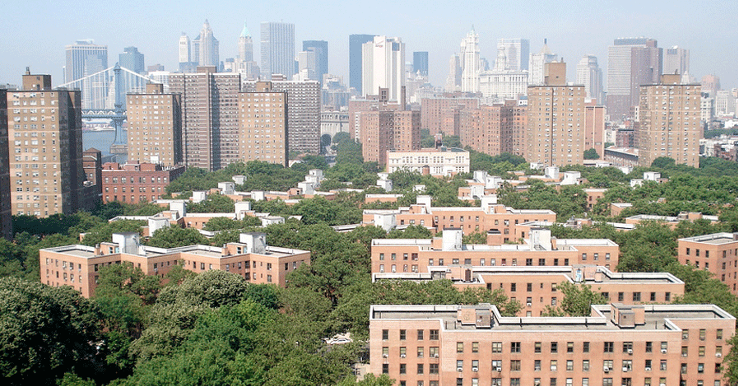Planning for a High Performance Future: Learning What We Already Know
By Erifili Draklellis, Projects Intern, Building Energy Exchange
High performance buildings are set to be New York City’s new normal. The Climate Mobilization Act of 2019 mandates energy efficient buildings that will eventually reduce building sector emissions 80% or more by 2050. The road to reach this goal is steep. With an aging building stock and an inefficient power grid, New York City has an uphill battle to meet its lofty decarbonization goals.
But the good news is that many existing buildings already model this idyllic future of NYC; they’re highly energy efficient, providing optimal occupant experience. Those existing buildings provide valuable insight to the future. They allow us to explore the ways in which investing in high performance works. And understanding how to get there is something we desperately need if we want to make significant progress in rectifying the inefficiencies in NYC’s iconic skyline.
Knowing this, we at BE-Ex are embarking on a journey to identify and log high performance projects in NYC and beyond. These buildings provide a roadmap, complete with testimonials, on cost savings, energy savings, available funding, and more. From new construction to retrofits, we undertook the task of compiling these model buildings into a database and scoring them on their relative performance.
To do so, we first had to understand the policy landscape of NYC, which is indicative of greater trends happening across the world. Our codes are getting stricter on energy, and many places around the world are moving away from prescriptive requirements and toward performance-based targets. This means that instead of requiring certain building components like thresholds for r-values and u-values, buildings will simply be held to an absolute energy performance metric based on Energy Use Intensity (EUI), which is evaluated on a kWh/ft2 basis. New York City is one of those cities, shifting to a performance-based code starting in 2025.
We want our database on high performance projects to capture that transition. Our database will look at the prescriptive details of each of the building’s systems, from HVAC to lighting, as well as overall energy performance through EUI. Exhibiting both of these types of metrics will help us to understand which strategies achieve optimal levels of performance, and how they stack up against each other.
How these buildings perform against the others begged one internal question: how do we score these high performers to understand which are the best of the best, and which buildings still have room to grow? We want to understand which buildings use the least amount of energy per square foot, and which ones use that energy more efficiently relative to the rest of the buildings. Knowing this will help us better understand our priorities for upcoming Local Law 97 compliance deadlines. It would also help us identify models as we seek to educate the building community on high performance.
We also want our high performance database and score card to demonstrate one building performance need that is increasingly necessary given our climate and COVID-19 crises: the occupant experience. The built environment’s purpose is to serve as refuge against the elements. As our climate rapidly changes and a global pandemic continues to spread, occupant health, safety, and comfort are integral parts of our buildings.
Measuring the occupant experience proved to be a lot more challenging than energy use. We know that envelope considerations correspond to both energy performance and occupant comfort, such as daylighting, Passive House certified windows, and thermal bridge mitigation. But what about things like overheating in the winter and passive ventilation in the summer? What about things like post-occupancy surveys, and what do they say about the building itself versus the tenant’s experience? Thus, truly quantifying and scoring the occupant experience has proven to be a much larger challenge.
As we continue to work through how exactly to quantify the occupant experience, we’ve moved forward on conceptualizing a scoring mechanism. We want buildings to be awarded for their demonstrated success relative to other buildings in the database, in terms of energy efficiency and occupant experience. We want buildings to achieve up to 2 points for occupant comfort and 3 points for energy efficiency, totaling a possible 5 points.

With LEED ratings, energy scores, EnergySTAR, and countless other scoring mechanisms, does the building community need yet another scoring system? We don’t know yet. We’d certainly like to be able to manipulate a scoring system that shows us exactly what we’re interested in knowing, with no fluff to parse through. But how valuable this would be to us, our partners, and buildings inside and outside of NYC remains to be seen.
We’ve lit the spark to start a fire in what will become a robust confluence of high performing buildings. How exactly it takes form will continue to change as we continue to think about what data are necessary to transform the existing building stock to what we know it can be.
